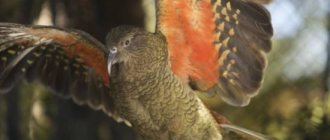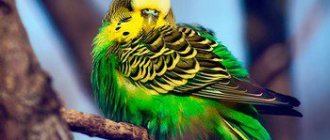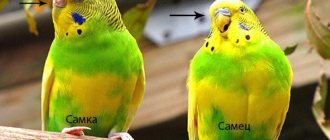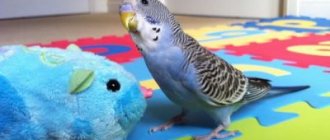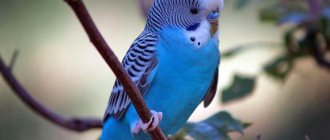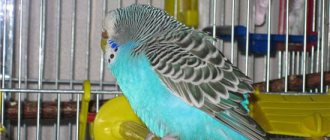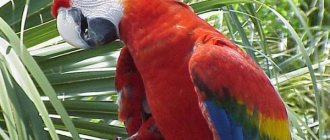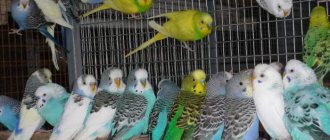Parrots are one of the most recognizable bird species in the world. They are loved for their stunning appearance, cheerful nature and endless curiosity. But being quiet and lethargic is not the best thing for parrots.
So, do parrots make a lot of noise at night? Not really.
Parrots are diurnal, which means they are active during the day and sleep all night. All species of parrots known to man are diurnal, with two exceptions. One of them is the Kakapo, a flightless breed of parrot from New Zealand. These birds are nocturnal - they sleep during the day and remain active in the dark.
We have found that in most cases parrots do not make noise at night. But then no one can ever understand what is going on in his brain and when the siren will go off.
The answer that parrots make a lot of noise at night is not as simple as we might think. Here's what you need to know!
Why does a parrot make unpleasant noises?
Depending on the type of parrot, there may be different reasons for screaming. Their volume and intensity also vary.
Runs around the cage and screams
A bird may do this for the following reasons:
- wild and untamed individual;
- stress, anxiety, fear, feeling of danger;
- disease or parasites;
- change in living conditions or family composition;
- lack of food or water;
- an attempt to attract attention.
In addition, parrots do not like to be left alone and can react with loud sounds when their owner leaves the house.
Therefore, it is better to have several birds at once, and if there is only one pet, you should gradually accustom it to the fact that for some time it will be deprived of company. Many birds respond well if they are left with a radio turned on quietly.
Yells in the morning
The cry of birds in the morning is a completely natural phenomenon. The fact is that their greatest activity occurs in the early morning hours and before sunset. Therefore, the biological rhythms of parrots living at home completely coincide with the rhythms of their wild relatives.
The exception is situations when the length of daylight hours is artificially regulated. For example, if you put a blanket over a parrot's cage, then most likely there will be no usual morning cry.
Screams at night
If the parrot has recently appeared in the house and is not tamed, then any sounds or movements may frighten it. This is the headlights of a passing car, sounds outside the window, the cry of a night bird, the noise of a fan or the movement of curtains. The result of this is a strong cry, with which the bird expresses its fear and tries to scare away a potential enemy.
During this period, she may begin to rush around the cage, risking damage to feathers or wings. If this happens, you need to immediately turn on the light, calmly and affectionately talk to your pet, and offer him fresh water. It is also necessary to remove damaged feathers and treat these areas with a solution of hydrogen peroxide.
And when planning the cage environment, perches and toys should be positioned in such a way as to reduce the risk of injury in the future.
#1 15.01.2011 16:32:54
the parrot cannot fly and constantly falls from its perch
We adopted the parrot 2 months ago, now he is about 5 months old. he was cheerful, cocky, and flew freely. We fed him cokorite food/add calcium to the water. The cage is on the refrigerator. Previously, in a cage, he would sit on our finger, chirp, and let us pet him. 2 days ago, when we entered the kitchen, we found him on the shelf, he tried to get off the shelf, but fell on the table, they picked him up and he didn’t even snail, they put him in a cage. His wings are moving strangely, he’s shaking, he’s trying to climb onto the geode, but he can’t , hold on only with his beak, if we help him, he doesn’t sit there for long, and then falls again. a day later he seemed to feel better, they tried to let him out, but he flew up a little and crashed into the wall and fell. He also starts screaming and huddles in a corner when we approach him. Tell me what’s wrong with him, how to treat him, we’re very worried.
The most noisy parrots: the nature of the cry and its reasons
Many bird owners note that the most noisy of them are cockatiels and budgies.
Corella screams all day long
Corellas are one of the most talkative species of parrots. Moreover, their sounds, already quite sharp, can develop into an almost unbearable scream.
Most often, this happens to wild or overly spoiled individuals.
- If you get a wild parrot, you need to be patient to train your feathered pet. Having gotten used to you and the new environment, he will begin to behave calmer.
- In the second case, only a competent reaction to his cry will help. You should not run into the room at the first call of the cockatiel - on the contrary, he must understand that they approach him, let him out for a walk, or give him food only when he behaves well. And such behavior should be encouraged in every possible way.
If you open the cage to let your bird out for a walk, you should do it before he starts screaming with impatience. Gradually, the cockatiel will understand that it is not at all necessary to scream heart-rendingly to get what you want.
And although its cry is not always pleasant to the ear, it must be remembered that this is a normal instrument of communication for birds. And the cockatiel is unlikely to remain absolutely silent.
Budgerigar screams loudly
Budgerigars, like all other birds, greet the sunrise with joyful chirping and see it off just as loudly at sunset.
There are several more types of their sound signals:
- melodious chirping - birds communicate with each other;
- an abrupt, sharp cry - indignation, discontent, quarrel with relatives;
- prolonged scream - extreme degree of indignation, fear;
- abrupt chirping - attracting attention, the desire to eat or leave the cage;
- singing with a little clicking - luring the female to the male.
In addition, the cry can be made from joy or boredom. Budgerigars also love to scream in flight, and nothing can be done about it.
Play with me
If your budgie is chewing on its cage, try to analyze its behavior. Maybe he's just bored. In this case, offer him a variety of toys, swings, a mirror, and a bell. Pay attention to it more often, play with your pet, let it go for walks. Parrots are very sociable animals; without games and warm relationships, they literally waste away.
Intrusive scraping of the beak against the bars of the cage may simply be the hooliganism of a bored pet. It happens that a wavy parrot gnaws at its cage so that you will come running to the sound and start playing and talking with it. In just two or three days, a pet can develop a reflex that in order for the owner to dispel his loneliness, he only needs to chew on the cage. It will be much more difficult to wean your pet off of this. Therefore, if your pet begins to chew on the cage, do not rush to scold him, do not show your displeasure, analyze the situation.
How to stop a parrot from screaming
Before you try to wean your pet from screaming, you should determine its cause. To do this, it is worth observing him for some time and noting the situations in which he begins to scream.
It is best to record this data in table form.
- Date and time.
- Condition for a cry to occur.
- The nature and duration of the cry.
It is better to fill out the table over a long period of time, while simultaneously monitoring the health and appearance of the bird.
If you have any suspicions about possible illnesses, it is better to seek help from a specialist. Perhaps the reason for your pet's behavior is some kind of disease. In other cases, it is necessary to analyze the data obtained.
Morning screaming is normal, but if for some reason it is undesirable, you can simply reduce the bird's daylight hours by throwing a cloth over the cage. Then the parrot will be calm until you remove it.
Other manifestations of ill health
Usually, the feathering is accompanied by other signs of the bird’s painful condition: trembling, difficulty breathing, eyes closed as if in pain, and there may be vomiting and diarrhea. The parrot sleeps almost all the time and sits at the bottom of the cage, and not on the perch - he simply does not have the strength to do this.
The ruffled appearance of a parrot makes it clear to the owners that the pet either has a cold, has poisoning, or is in pain for some reason. The reasons for this behavior can be various diseases that develop in birds and can affect any organs: eyes, ears, beak, paws, wings, etc. Various infections and diseases of internal organs are also possible.
Of course, only an ornithologist can determine the specific cause, who, if necessary, will do the necessary tests and examinations to clarify the situation.
What not to do
Even if the cry of a parrot literally drives you crazy, under no circumstances should you do the following:
- beat the bird or the cage it is in;
- shout at her;
- splash water.
This behavior will not only not help, but will most likely harm your feathered friend. This will cause him to be even more stressed and the screaming will continue even longer.
So, now you know that the key to a well-behaved parrot is a calm environment in the house and the right conditions for keeping it. You should take good care of your pet, be attentive to its health and spend enough time with it - and then your feathered friend will bring you only joy.
Stress factors
Parrots are very sociable and lack of attention and entertainment makes them very sad. They start making noise and chewing on the cage to attract attention. And even if you come up at this moment to scold him, he still, to some extent, gets what he wants. And it is already extremely difficult to wean yourself from a bad habit. Try to spend time with him in advance, add new toys so that he doesn’t get bored in your absence.
Birds are very shy and their home should be a kind of protection. If there are cats or other animals at home that can scare them there, the parrot loses its sense of security and wants to move to another place. The feeling of constant fear prevails over the rest, and he will constantly attempt to escape by destroying the freedom limiter. Try to protect him and the parrot will spend time calmly in his “house”. They are school animals, and in this case, acquiring a feathered friend can still help, but we must remember that then their needs will double, so that other problems do not arise.
Why does the parrot run around the cage back and forth?
Before purchasing a feathered pet, you should familiarize yourself with the relevant literature on the care and behavioral characteristics of parrots. In case of improper care, illness or other factors affecting the condition of the bird, it may develop an atypical lifestyle - hyperactivity, or, conversely, lethargy. With an increase in the frequency of movements and constant noise, especially in the dark, owners have a question: why does the parrot rush around the cage at night? I will try to give the answer in the article.
Reasons for a parrot tossing around its cage
Description of the problem
Buying a parrot binds the owner with certain obligations to the bird. Activity and high metabolic rate require regular feeding, water changes and regular cleaning of the cage. If you do not take care of your bird in a timely manner, many health problems of a bacterial, infectious or autoimmune nature may arise. With an incorrectly formulated diet, various diseases also begin.
After purchase, the bird goes through a short adaptation period, up to two weeks. The duration may vary depending on the nature and species of the individual.
Description of the problem
If the bird is subjected to stress, for example, during transportation or changes in housing and nutritional conditions, severe depression may occur. To minimize the influence of external factors on your pet, it is advisable to regularly feed it with its favorite types of food.
Stress can cause changes in the bird's activity. Normally, parrots are energetic during the day and sleep at night. The bird moves and plays most of all in the morning. Therefore, if a wavy or cockatiel makes noise at night, you must be wary and find the cause of the atypical behavior. I will list the options below.
Taming Features
The field of adaptation, when the pet gradually gets used to the owner, you can begin regular training. It is very easy to determine a parrot's readiness - it does not hide from people, it can sit on a hand, and when it leaves it it returns on its own.
Every day, bring an open palm with grains or other treats into the house several times. Over time, the bird will stop being nervous. What to do if the parrot is afraid of its owner? Please be patient. Hold your hand in the cage to make sure there is no danger. After some time, the wavy will come closer, and then it will boldly peck at the food. After a few weeks of simple manipulation, the bird will begin to fearlessly approach you. Gradually, the pet can be taken out of the cage and trained in the wild.
Every day, bring an open palm with grains or other treats into the house several times
It is better to conduct classes in the morning, when the bird is hungry, cheerful and cheerful. If you remove all the food at night and feed it from your palm in the morning, the taming process will be much easier. To quickly establish contact with a parrot, it is not advisable to wash your hands with scented soap and lubricate them with cream - foreign odors repel him. All classes should be done gently, without putting pressure on the pet. As a result, you will get a friendly and loyal friend.
Possible reasons
The main factors why a parrot may behave unnaturally include:
- improper care;
- adaptation period;
- lack of walking;
- nesting time;
- gout.
Incorrect conditions of detention
If the bird runs around the enclosure and hits its walls, the problem may be due to stress. The reason may be the wrong location of the home, as a result of which the parrot gets scared and starts screaming loudly and rushing about.
Constant cell rearrangements may also be to blame. To get rid of the inconvenience, try returning or moving the enclosure to its original place.
Adaptation to new conditions
If the problem appeared immediately after the move, and the parrot runs around the cage at night, then it is simply getting used to its new place of residence. To speed up the adaptation process, try feeding your bird his favorite foods for a while. When purchasing and moving to a new habitat, it is better to check with the seller about the food preferred by birds.
No free range
This problem can arise if the bird lives with one breeder for a long period and is limited in flights due to the owner’s lack of time. The sudden onset of nocturnal hyperactivity, when the bird rushes back and forth around the cage, indicates the need for access to free range. To save your parrot from further depression, be sure to release it regularly into the wild.
Nesting period
If birds are ready to have offspring, they will chirp more, spend time with toys and their significant other. Throwing around the cage can occur when kept in pairs. The male pet begins to move around the enclosure, depicting the typical mating behavior of budgerigars - dancing.
The female is most active when laying eggs. She prepares the nest, while chirping loudly.
None of these symptoms are considered pathological. However, joint diseases, which are discussed below, can also lead to the appearance of such signs.
Gout
If a cockatiel, or any other parrot, is not fed correctly, adding, for example, fatty foods to the diet, nodules may form on the paws, which lead to severe pain when moving.
Typical symptoms for gout:
- The pet is lethargic for a long time.
- The bird is constantly at the bottom of the enclosure.
- He eats poorly or refuses food altogether.
- Loose stools may appear.
With gout, attacks of increased activity are common, when the bird begins to move along the bottom of the cage, then falls and settles. Parrots are very difficult to tolerate this disease.
To improve the condition, it is advisable to show your pet to an ornithologist veterinarian, who will make a diagnosis and prescribe specialized treatment. It usually includes multivitamin complexes, as well as a special diet.
Gout
The disease occurs due to overeating homemade food from the table. The disease can be recognized by characteristic nodules on the joints of the paws. This defect causes severe discomfort. The bird experiences pain when moving.
Associated symptoms are:
- lethargy;
- constant presence at the bottom of the cage due to the inability to stand or sit on a perch;
- decreased appetite;
- at a later stage, loose and profuse stools appear.
During gout, your parrot may experience bouts of hyperactivity. The parrot runs along the bottom of the cage, makes various sounds, and then falls again and continues to sit lethargic and sick. The disease is difficult to tolerate. Due to the frequent manifestation of the disease, the disease becomes chronic.
To alleviate the pet's condition, vitamin complexes are included in the diet. The balance in food is clearly maintained. Protein foods of animal origin are excluded.
In severe cases of gout, surgical intervention is used to remove the nodules. During the procedure, a lump on the joint is pierced with a sterile needle and the accumulated fluid is squeezed out. Such actions make the life of the bird much easier.
A caring owner must clearly distinguish the nature of the hyperactivity symptom. If this is a temporary manifestation, then do not worry. It is necessary to pay more attention to the pet and understand what he wants to change. An active, energetic bird means healthy.
Owners may find their parrot stressed and afraid of things. The parrot should not be nervous. In this case, the parrot is more susceptible to disease, will interfere with training and can harm itself by tearing out feathers (but this is only in case of severe and constant stress).
- Sudden and rapid movements of the owner
- Unexpected and loud noises
- Other pets
- Darkness
- New cage/new cage location in the apartment
Advice from experienced breeders
To stop your pet from screaming and thrashing, be sure to determine the root cause of the inappropriate behavior. To do this, watch the bird during the day. Note all the situations when he begins to behave atypically. If this happens over a long period of time, be sure to contact your veterinarian for qualified treatment.
Your rating is very important to me
Rate the article from 1 to 5
Average rating 4/5. Total ratings 5
There are no votes yet - be the first to rate!
Natural and home conditions
Budgerigars are native to Australia. Under natural conditions, these birds have a lot to do: feed themselves and their offspring, find drinking water, and so on. To survive, parrots have to cross long distances, so they need a lot of strength. Sleeping at night helps you accumulate energy for future flights.
In addition, the Australian mainland has a unique climate - hot and humid. By the middle of the day, the air temperature rises so much that the parrots have to hide in the shade of trees, which also save them from attacks by predators. Parrots also spend the hot daytime time resting and gaining strength.
Domesticated parrots have the same natural instincts. If you see your pet sleeping during the day, don't worry - this habit is in their blood. However, in the wild, nature takes control of parrots’ sleep. Their owners should take care of how to sleep budgies at home.
Possible complications
Your feathered pet doesn't care about the fact that you have an irregular sleep schedule. You can go to bed at any time you want, but your bird needs to get enough sleep.
Due to the lights not being turned off at night and extraneous noise (TV, music, guests talking), the parrot cannot sleep. For proper bird sleep, the room where the cage hangs should be dark and quiet. If the “wavy” does not get enough sleep at night, he will sleep during the day.
If you do not take care of your pet’s physical and mental condition and ignore its needs, then it is unlikely that it will be healthy, cheerful and active. Due to chronic lack of sleep, a budgerigar may develop the following problems:
- unnatural loss of feathers;
- self-plucking;
- constant drowsiness and lethargy;
- state of apathy;
- nervousness;
- depression;
- aggression;
- lack of appetite;
- unplanned egg laying.
Sleeping mode
In order for a budgerigar to get enough sleep, the duration of its sleep in the summer should reach ten to twelve hours, and in the winter - twelve to fourteen hours.
In order not to harm the health of your feathered pet, you need to provide him with optimal conditions for rest. The budgie begins to fall asleep when it gets dark. For proper sleep, at the appropriate time it is necessary to cover the bird’s cage with a breathable, dense fabric. Thanks to this, she will decide that it is time to sleep.
In the summer, when it gets dark outside the window, cover the cage around nine o'clock in the evening. Then your pet will sleep for the prescribed ten to twelve hours. In winter, you will have to put the bird to bed earlier - between five and seven hours. And she will be able to sleep for about twelve to fourteen hours.
Sleep position
A healthy budgie should sleep on one leg. Although many entertainers can fall asleep, grabbing the cage wall with one paw and the perch with the other. But young parrots that have recently left the nest rest on two legs for the first time, since their coordination is still poorly developed.
A budgerigar often hides its head under its wing when sleeping. At the same time, he tries to tuck his beak into the feathers that replace his blanket. This position helps maintain warmth while the bird sleeps.
If your budgie is already an adult but sleeps on two legs, it may be tired or sick. Only in this position can the bird maintain its balance.
I want something tasty
Parrots need mineral supplements. The cage must contain chalk, sepia or shell rock, which is adored by all parrots. If they are not there, the budgie will begin to chew on the cage. Of course, there is nothing useful about steel rods. But paint can be very harmful.
If a budgerigar chews on the bars of a cage covered with galvanization, enamel, paint, or rust, urgently transfer it to another cage. The bird can swallow these pieces and become poisoned or develop an intestinal obstruction. The best cage for a budgie is made of stainless steel. When nothing is scraped off the rods, there is no interest in gnawing on it.
There is also such a problem as an ever-growing beak. If your pet does not have the opportunity to wear it down, health problems will inevitably arise. Parrots wear down their beaks by gnawing on various hard treats. Prepare branches of fruit trees, willow, and his beloved linden for your pet, and he will not need to chew on the cage.
Sleep disorders
Daytime nap
As we said above, budgies love to rest during the daytime. Therefore, there is no need to worry if you notice that your pet has dozed off during the day. Perhaps he just had a good meal or is just bored. Such rest helps the bird either pass the time or gain strength.
You need to worry when your pets sleep for a long time at night, but are constantly lethargic during the day and fall asleep every now and then. In this case, you need to watch the bird.
If she begins to eat poorly or refuses to eat at all, and the bottom of her cage is covered with fluff and feathers, the parrot may have begun seasonal molting. You can read more about it in the article “Moulting in a Budgerigar.” In this case, you shouldn’t touch it again; it’s better to add special vitamins to the bird’s diet.
If, when examining your pet, you find that he has a disheveled appearance, with feathers sticking out sloppily in all directions, most likely his health is not all right. Vomiting that suddenly begins or prolonged diarrhea may indicate either poisoning or the onset of a serious illness. It is best to consult a veterinarian for advice.
Lack of minerals in the body
When you feel that your body is lacking something, for example, your nails and hair are breaking and your skin is becoming dull, then you go and buy the appropriate vitamins and minerals. But our pet cannot even understand for himself what exactly he wants, but the body requires something that is not in the diet. Then their appetite is distorted, and they begin to gnaw on everything nearby. There is a lot of information on each species of parrot and their daily nutritional needs. By familiarizing yourself with them and supplementing the diet with the necessary elements, you will not only solve the problem of property damage, but also significantly improve the quality of life of your bird.
The essence of the problem
The appearance of a parrot makes some adjustments to the breeder’s everyday life.
Proper care of birds requires daily cleaning of the enclosure, as well as changing water and food. Incorrect living conditions, lack of disinfection, imbalance in diet lead to various pet diseases. An inexperienced owner should know that after purchasing a parrot, the bird goes through an adaptation period. Depending on the nature and type of bird, this period takes different times. On average - 14 days.
Transportation, sudden changes in living conditions and usual food put the parrot under stress. All birds have different reactions to moving. Some people tolerate it easily, while others experience an attack of hyperactivity. At the same time, the parrot rushes around the cage and screams loudly.
In order for your pet to quickly get used to new conditions, the surrounding world and people, you need to ask the seller in advance what the parrot eats. The presence of a favorite treat in the cage can make the bird happy, which will help calm it down.
Treatment methods
If the parrot is weakened for no apparent reason, then to determine effective therapy, you should find the factor that affected the health and general condition of the bird. To treat psychological stress, the breeder must be patient and protect the bird from external negative factors. Show your friend as much friendliness as possible, pay more attention and spend time together until the parrot’s normal psychological state is restored.
To treat colds, warming up under a 60 W lamp for 15 minutes daily is used, excluding overheating. Inhalation is an effective method of combating pathologies of the respiratory system. In severe situations of colds, it is necessary to take a course of antibiotics to restore health. The dosage and treatment regimen are determined by an ornithologist. The diet includes a vitamin complex, vegetables and fruits. If parasites have been diagnosed in the body, then special treatment is carried out against ticks and helminths.
Daily care and communication, as well as care and proper maintenance will eliminate the weakness of the feathered pet and a number of diseases of various etiologies. A healthy parrot is a happy owner!
Reasons for parrot activity
- Adaptation to new conditions;
- Lack of free range;
- Nesting period;
- Gout.
If the bird lives in your house for a long time and is accustomed to its surroundings, then the appearance of hyperactivity may indicate a lack of free flights. At the same time, the parrot runs around the cage back and forth, trying to throw out energy. It is necessary to provide your pet with regular walks. Free range is a necessary requirement for keeping a feathered friend.
Another reason for the manifestation of symptoms may be the period of sexual activity. By its behavior, the parrot shows its readiness for nesting. The male is active and playful. When kept alone, the bird pays increased attention to its favorite toys. The bird makes chirping sounds and often moves its paws in one place. If parrots are kept in pairs, the birds express excited behavior to each other. At the same time, the parrot runs from side to side along the perch, pretending to dance. The feathers on the head rise at this time. The male takes care of his mate, cleans her feathers and brings her food.
The female shows increased activity during the laying period. She is preparing a place for future babies. Collects fragments suitable for soft and warm bedding. These could be pieces of paper or twigs. During its exciting actions it makes characteristic chirping sounds.
This manifestation of bird behavior is not considered a deviation from the norm. But the symptom of hyperactivity occurs in the disease Gout.
Example of actions for fear of toys
For example, a parrot is afraid of a new toy or any toys in general. What to do in such a situation? First, show him that this item is safe for you, that is, you yourself enthusiastically play with this toy, rejoice and show positive emotions. The winged pet, being very curious by nature, will want to join your fun after a while.
Reward your pet generously for the slightest attempt to come closer to the toy or touch it. Use treats or just strong emotional praise as a reward. Do not force or force your bird to make contact with the toy if it does not want to. She must want to approach the new object herself.
Bird training should be slow and gradual; you should not try to speed up the process. If your pet begins to touch the toy, this does not mean that it is time to hang it in the cage. For him, this is a still unknown thing that poses a danger to him. Speeding up the process can lead to the opposite result and all your efforts and time spent getting to know a new subject will be wasted. Another example, a feathered pet is afraid of water procedures. Proceed in this situation in the same way - put his favorite things, if any, or treats in the parrot’s bathing suit. Encourage any attempt to approach the bathing suit from the bottom of your heart. And over time, bathing can turn into a favorite pastime.
Love, patience and gradual learning pay huge dividends. By gaining the trust of your pet, you can make the life of your feathered pet happy and safe.

